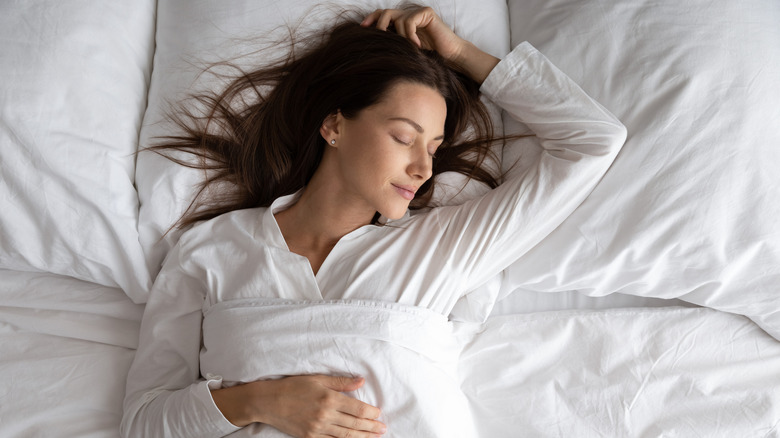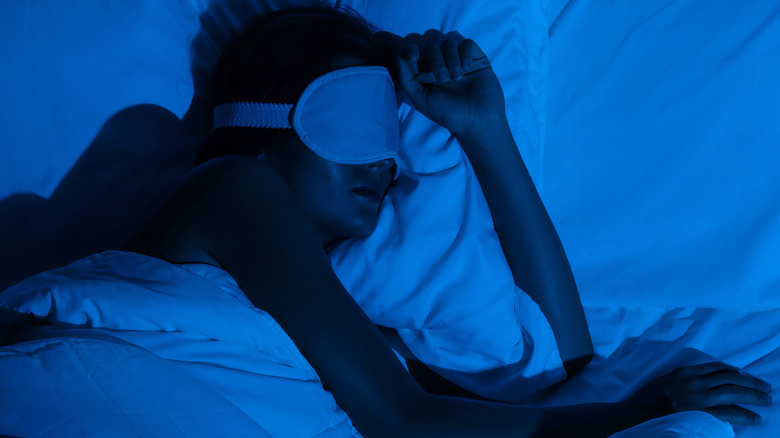The Real Difference Between Noise Colors
Listening to a consistent, soothing sound, like a fan or waterfall, at night can help block other sounds and allow you to sleep better. But it turns out many of us are using white noise as a catch-all phrase. Background noise that blocks other sound can actually be broken down into a variety of colors. And knowing the difference between the different noise colors may help you sleep better.
The differences in the colors come down to frequency and amplitude. Frequency is how quickly a sound wave vibrates per second and is measured in hertz, and amplitude is the size of the waves and is measured in decibels (via Sleep Foundation). True white noise isn't just any background noise. It is a combination of all the frequencies that are audible to human ears and at an equal amplitude for all the frequencies, which makes a consistent and noise-blocking "sshhhh" type sound. It's called white noise for the same reason white light has its name; white light contains all the colors the human eye can see (via CNET).
Then there's pink noise. Compared to white noise, pink noise is a mix of softer high-frequency tones with stronger low-frequency tones (via Sleep Foundation). Think calm ocean waves or a gentle rain. In an article in the Journal of Theoretical Biology, researchers discovered that listening to pink noise while sleeping calms brain activity and improves sleep quality. Pink noise has even been shown to improve memory (from Sound of Sleep).
Trying different types of noise color may help improve your sleep
Brownian or red noise is similar to pink noise but with more bass / low frequency tone intensity, like a low roar — think the rushing of a river current or ocean surf during a storm (via Wired). Brown noise has been said to improve focus, relaxation, and overall sleep (via Sound of Sleep).
The opposite of pink and brownian noises are blue and violet. The opposite of pink noise is blue noise, which has more high frequency tones and fewer low frequency tones, like the "hiss of a kinked garden hose" (via CNET). The opposite of brownian or red noise is purple noise, with higher intensity at high frequencies, and listening to it can help those with tinnitus (via Wired).
So if you're working to get a better night's sleep, it may be worth experimenting with some different background noises to see which one leaves you feeling the most rejuvenated and rested in the morning.

